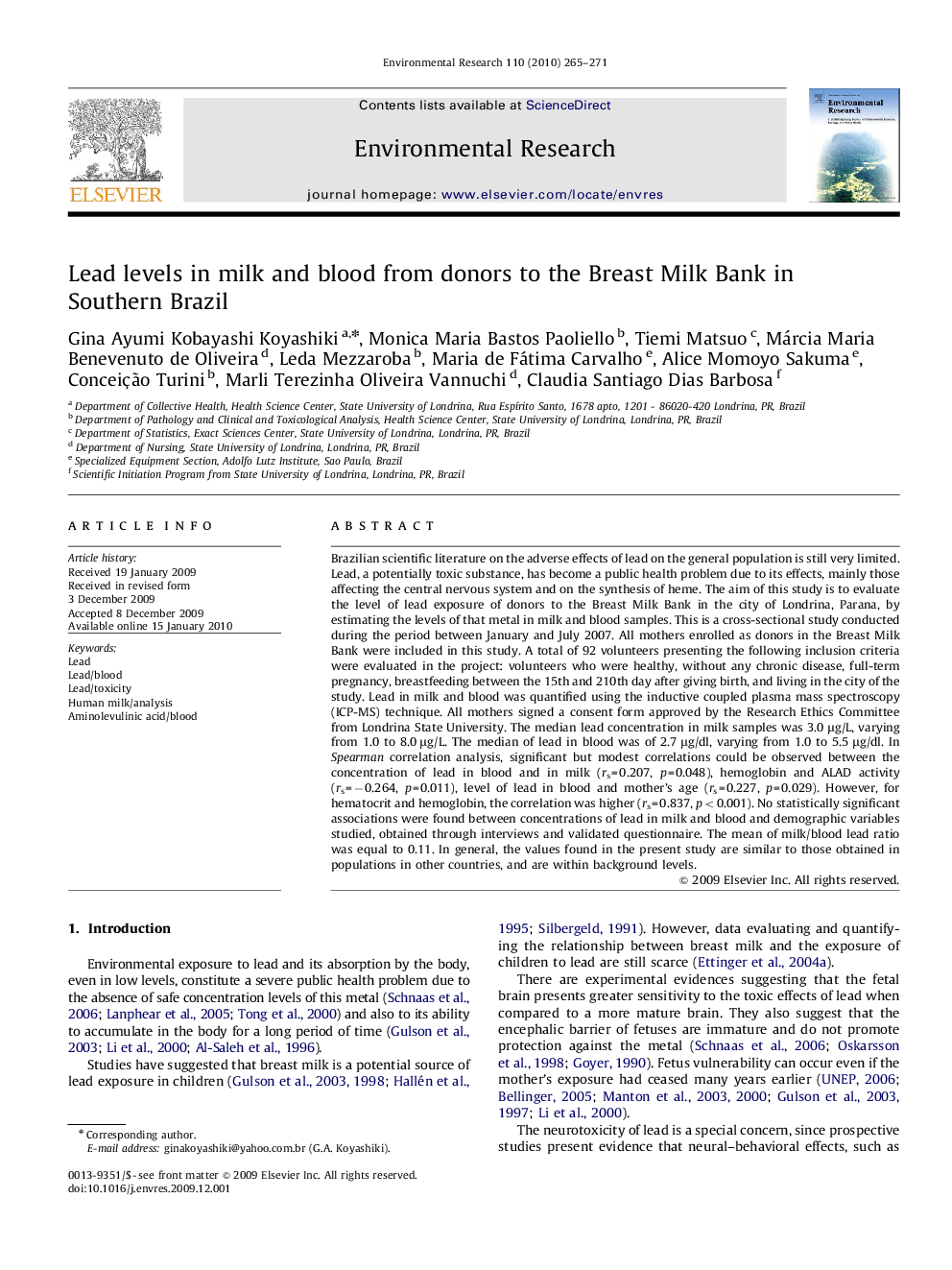| کد مقاله | کد نشریه | سال انتشار | مقاله انگلیسی | نسخه تمام متن |
|---|---|---|---|---|
| 4470424 | 1314424 | 2010 | 7 صفحه PDF | دانلود رایگان |

Brazilian scientific literature on the adverse effects of lead on the general population is still very limited. Lead, a potentially toxic substance, has become a public health problem due to its effects, mainly those affecting the central nervous system and on the synthesis of heme. The aim of this study is to evaluate the level of lead exposure of donors to the Breast Milk Bank in the city of Londrina, Parana, by estimating the levels of that metal in milk and blood samples. This is a cross-sectional study conducted during the period between January and July 2007. All mothers enrolled as donors in the Breast Milk Bank were included in this study. A total of 92 volunteers presenting the following inclusion criteria were evaluated in the project: volunteers who were healthy, without any chronic disease, full-term pregnancy, breastfeeding between the 15th and 210th day after giving birth, and living in the city of the study. Lead in milk and blood was quantified using the inductive coupled plasma mass spectroscopy (ICP-MS) technique. All mothers signed a consent form approved by the Research Ethics Committee from Londrina State University. The median lead concentration in milk samples was 3.0 μg/L, varying from 1.0 to 8.0 μg/L. The median of lead in blood was of 2.7 μg/dl, varying from 1.0 to 5.5 μg/dl. In Spearman correlation analysis, significant but modest correlations could be observed between the concentration of lead in blood and in milk (rs=0.207, p=0.048), hemoglobin and ALAD activity (rs=−0.264, p=0.011), level of lead in blood and mother’s age (rs=0.227, p=0.029). However, for hematocrit and hemoglobin, the correlation was higher (rs=0.837, p<0.001). No statistically significant associations were found between concentrations of lead in milk and blood and demographic variables studied, obtained through interviews and validated questionnaire. The mean of milk/blood lead ratio was equal to 0.11. In general, the values found in the present study are similar to those obtained in populations in other countries, and are within background levels.
Journal: Environmental Research - Volume 110, Issue 3, April 2010, Pages 265–271